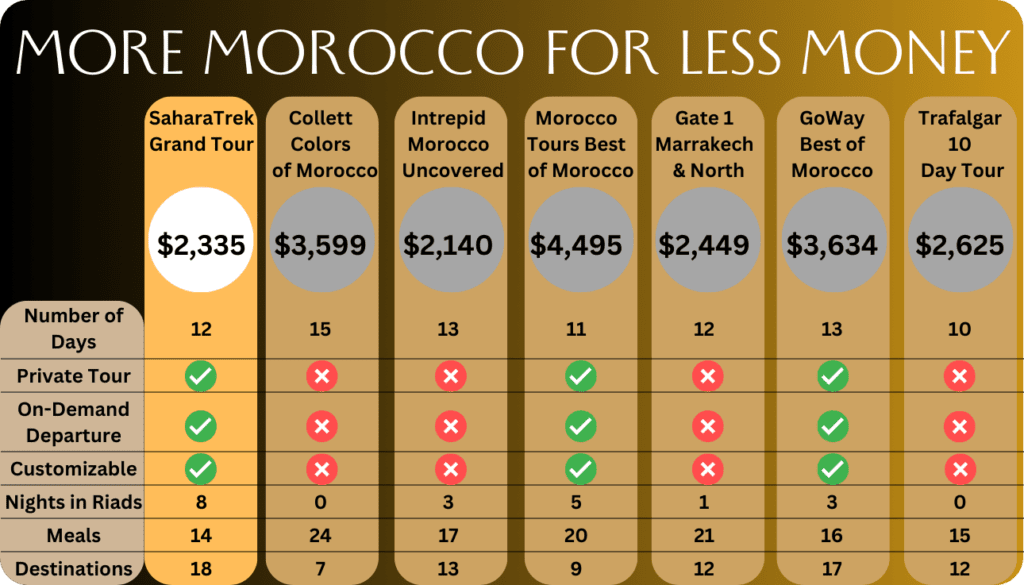 Customized slow trip - yet affordable! - As hands-on or off as we wished! No regrets with SaharaTrek. Best decision we made for our first trip to Morocco.
Customized slow trip - yet affordable! - As hands-on or off as we wished! No regrets with SaharaTrek. Best decision we made for our first trip to Morocco.
Luiza helped us plan a trip to slowly... read more go around the country - extra days in key cities to relax, learn, and absorb rather than single day stops at many places. It all went smoothly, and yet we had flexibility!
We enjoyed a balance of "on our own time" plus guided medina tours and classes:
Family Cooking with Brahim and Sena;
Bread Baking with Najiyah, including the community oven; and
Calligraphy with Mohamed Charkaoui. 5 stars each.
Our driver, Mostafa, was outstanding. 10 stars. From airport pickup to dropoff. You need to get along with the driver, and he was so friendly, flexible, ready when we were. We learned a lot from Mostafa. Shukran, my brother, we miss you.
Riad accomodations were very comfortable with outstanding service. Beautiful, clean, and quiet, great locations.
Our Marrakech guide, Aziz, and Fes guide Mohamed, were perfect matches for us in the medinas and souks, with the artisans - they know so much history, culture.
Jawad in the Palmary, after the Gorge, was a great way to learn about dates and go for a nice hike, meet farmers, climb a date tree!
We hit Essaouira (relaxing ocean side town, 2); Marrakech (4); Ait Ben Haddout, Todra Gorge and Palmary (1); Erg Chebbi with Camel Sunrise ride (1); stopped for the Ziz Oasis and Atlas monkeys on our way to Fes (3); and then Volubulis (self guided, try it backwards!), Rabat and Casablanca to end the trip (1). The argan oil, pottery, and rug cooperatives were in there too.
12 very memorable days and nights. Thank you SaharaTrek.

